Knockwurst or Bratwurst: Best German Sausage Pick?
Knockwurst and bratwurst stand as popular German sausage varieties with worldwide appeal.
Meaty delights share a rich heritage dating back centuries in European cuisine.
Many fans appreciate knockwurst for its garlicky flavor profile and distinctive snap when bitten.
Traditional recipes for both sausages vary by region, with family secrets passed down through generations.
German festivals often feature these sausages as centerpieces alongside sauerkraut and mustard.
The subtle differences between them might surprise even seasoned food enthusiasts.
Would you recognize each type on a plate without labels? Continue reading to learn about their unique characteristics and find which sausage deserves a place at your next gathering.
Knockwurst: The Overview
Knockwurst, also known as knackwurst, is a traditional sausage from 16th-century Northern Germany, famous for its distinct texture and flavor. The name comes from the German words Knacken (to crack) or Knackig (crisp), referring to the sausage’s skin, which swells and “pops” during cooking.
Biting into a knockwurst releases juicy, flavorful bursts inside. Today, knockwurst is popular in America alongside other German favorites like pretzels and hamburgers.
It’s typically made from fresh garlic, ground pork, and veal, stuffed into hog casings, aged briefly, and smoked over oak wood for a rich taste.
Bratwurst Essentials Revealed
Bratwurst is a traditional German sausage made mainly from pork, beef, or veal. Its name combines “brät,” meaning finely chopped meat in Old High German, with “Wurst,” meaning sausage.
There are around forty regional varieties in Germany, with the most famous coming from Franconia in northern Bavaria. Bratwurst is often served as a quick snack with white bread rolls and mustard and is a popular street food across German-speaking countries.
It’s also widely enjoyed in the US, especially in the Upper Midwest, where many German-American communities live, with various flavors available in butcher shops and grocery stores.
Knockwurst vs Bratwurst: Difference Showdown
Knockwurst and bratwurst may seem similar at first glance, but these two sausages have their own unique qualities. Check the table below for more details.
| Feature | Knockwurst | Bratwurst |
| Ingredients | Ground pork and veal with garlic; heavily seasoned with paprika, mace, coriander | Ground beef, veal, or other meats; lightly seasoned with marjoram, nutmeg; rarely garlic |
| Appearance | Short, flat shape | Longer, thinner shape |
| Texture | Smooth but coarser due to heavier seasoning | Lumpy, finer grind |
| Color | Dark orange to reddish | Light salmon pink |
| Flavor | Strong, complex, smoky, garlicky | Mild, slightly sweet, natural meaty |
| Serving Style | Often served as a snack, with thicker, crispier casing that cracks when bitten | Fits well in buns or hot dog rolls; used with various condiments |
| Where to Find | Delis, artisan sausage shops, online retailers | Delis, artisan sausage shops, online retailers |
| Popularity | Popular in German-American communities, especially in the US Midwest | Also popular in German-American regions, common street and grocery store sausage |
| Seasoning Use | Heavy use of garlic and bold spices | Moderate seasoning with subtle herbs and spices |
Ingredients
Both knockwurst and bratwurst are made from meat, water, binding agents, and seasonings, but their ingredient choices differ.
Knockwurst usually combines ground pork and veal with fresh garlic inside a hog casing.
Garlic is essential for its signature savory flavor. It’s also heavily seasoned with spices like paprika, coriander, and mace, giving it a rich and bold taste.
If you prefer savory, strongly flavored sausages, knockwurst is a great choice.
Bratwurst primarily uses beef and veal or other meats, often with less seasoning.
Garlic is rarely used, and the spices are milder and carefully balanced, commonly including nutmeg and marjoram in small amounts. This makes bratwurst more subtle and less intense in flavor.
Appearance And Texture
Spotting differences between knockwurst and bratwurst is quite easy once you know what to look for. These sausages vary in texture - knockwurst contains more spices and isn't as finely ground as bratwurst, making each one feel unique in your mouth.
Knockwurst sausages come in short, flat shapes perfect for snacking by hand, with thick, crispy casings that make a satisfying crack when bitten into. Bratwurst, by comparison, has a thinner, longer shape that fits perfectly in buns or hot dog rolls, much like other popular sausage varieties.
The color difference is also notable - knockwurst shows off a darker orange or reddish hue, while bratwurst displays a lighter salmon pink color. These distinct characteristics make each sausage special and suited for different meals and occasions.
Flavors
Knockwurst has a complex, rich, and powerful flavor, highlighted by smoky, garlicky notes. This intense taste works well in recipes where bold flavors are desired.
Bratwurst offers a milder, more balanced flavor that highlights the natural taste of the meat. It has a subtle sweetness from its gentle seasoning and is often served with various condiments to complement its mildness.
If you prefer natural meat flavors without strong spices, bratwurst is ideal.
Availability
Both sausages are widely available in grocery stores and supermarkets, especially in US regions with large German-American populations like Wisconsin, Philadelphia, New York, and Chicago. For authentic options, delis and artisan sausage shops are reliable, and many online retailers also sell them.
How to Cook Knockwurst and Bratwurst Perfectly
German sausages like knockwurst and bratwurst bring amazing flavors to many recipes, and I'm always impressed by how flexible they are in the kitchen. These delicious meat treats can be prepared in so many ways - frying gives them a nice crispy outside, baking creates an even heat throughout, boiling keeps them juicy, and grilling adds that smoky outdoor taste we all love.
Frying Pan
Pan-cooking sausages starts with a tablespoon of butter or cooking oil heated on medium. After the oil becomes hot, add your sausages to the pan.
The cooking process takes between 10-15 minutes based on how well-done you prefer them. Make sure to turn the sausages now and then so all sides get evenly cooked.
When the outside develops a nice golden-brown color, they're ready to come off the heat. This simple method creates juicy sausages with that perfect outer texture everyone loves at mealtime.
Boiling Water
Fill your pot about three-quarters full with water and bring it to a gentle simmer over low heat. Once bubbling, turn the heat down a bit to keep the water at a steady, calm boil.
Drop in your sausages, put the lid on, and let them cook for 10-15 minutes while covered. After they're completely cooked through, take the sausages out of the water with tongs or a slotted spoon.
A quick rest on a plate or paper towel helps drain extra moisture before you serve them up hot and ready to enjoy.
Oven
Preheat your oven to 300F, then arrange sausages on a sheet tray or baking dish before sliding them in. The magic happens as they cook for about 20-25 minutes until they reach that perfect golden-brown color.
Giving them a quick rest after coming out of the oven makes all the difference in flavor and juiciness. Home-baked bratwurst turns out so tasty with this simple method - no fancy techniques needed!
Just follow these easy steps and soon the smell of perfectly cooked sausages will fill your kitchen. Many people don't realize how simple it is to make restaurant-quality bratwurst right at home without any special equipment or skills.
Grill
Cook sausages by placing them on a medium-heat grill. Turn them often to make sure all sides are evenly cooked without burning.
In about 5 minutes, they should be hot all the way through and ready to take off the grill.
Secrets to Perfect Serving Knockwurst and Bratwurst
German smoked sausages like knockwurst and bratwurst have evolved from quick snacks to popular foods at parties, sporting events, and beer festivals across the country.
Knockwurst
Bratwurst
Storing Guide for Knockwurst and Bratwurst
Storing these sausages are easy if you follow below guide.
| Storing Aspect | Knockwurst | Bratwurst |
| Refrigeration | Store in an airtight container or wrapped tightly in plastic wrap or foil. Keeps fresh for up to 1 week. | Store similarly in airtight wrap or container. Best consumed within 5-7 days. |
| Freezing | Wrap tightly in freezer-safe packaging or vacuum seal. Can be frozen for up to 2-3 months. | Freeze in airtight packaging or vacuum seal for up to 2-3 months. |
| Thawing | Thaw in refrigerator overnight before use for best texture and flavor. | Same as Knockwurst, thaw slowly in fridge overnight. |
| Cooked Sausage | Refrigerate cooked knockwurst in airtight container; consume within 3-4 days. | Cooked bratwurst lasts 3-4 days refrigerated in a sealed container. |
| Leftovers | Store leftovers promptly in fridge, well wrapped or sealed. | Promptly refrigerate leftovers; reheat thoroughly before eating. |
Got Questions? We’ve Got Solutions
1. Which one is spicier, knockwurst or bratwurst?
Knockwurst typically has more garlic and seasoning, giving it a spicier profile, while bratwurst tends to have a milder, more herbal flavor with notes of nutmeg and ginger.
2. What's the best way to cook each sausage?
Knockwurst is traditionally boiled or steamed and then sometimes lightly grilled, while bratwurst is often grilled, pan-fried, or simmered in beer before grilling for the authentic taste.
3. Can I substitute one for the other in recipes?
Yes, you can substitute them, but remember that knockwurst is thicker and more garlicky, while bratwurst is longer, leaner, and more subtly flavored, so the final dish will taste different.
4. How long do they stay fresh in the refrigerator?
Both sausages will stay fresh for 3-4 days in the refrigerator when uncooked, or about 7 days if they're pre-cooked. You can also freeze them for up to 2 months.

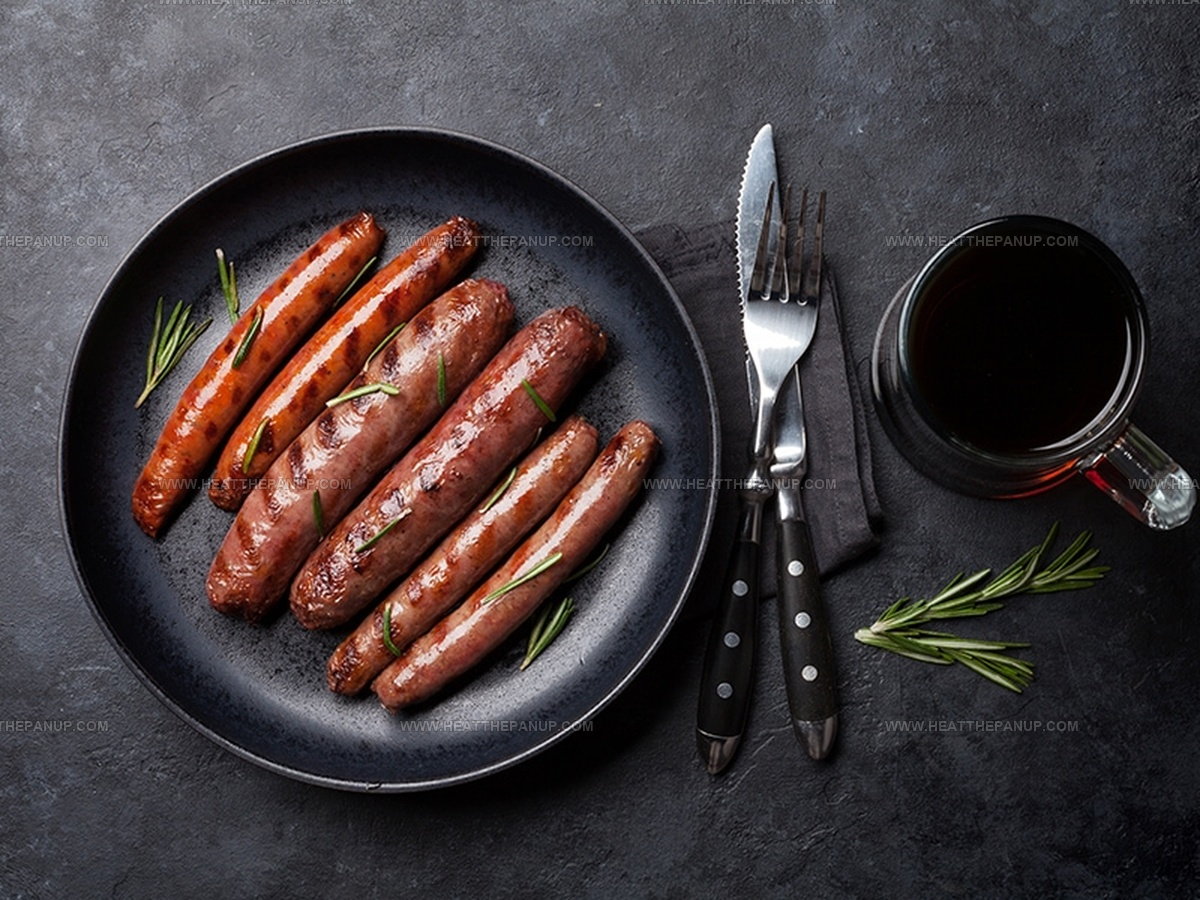
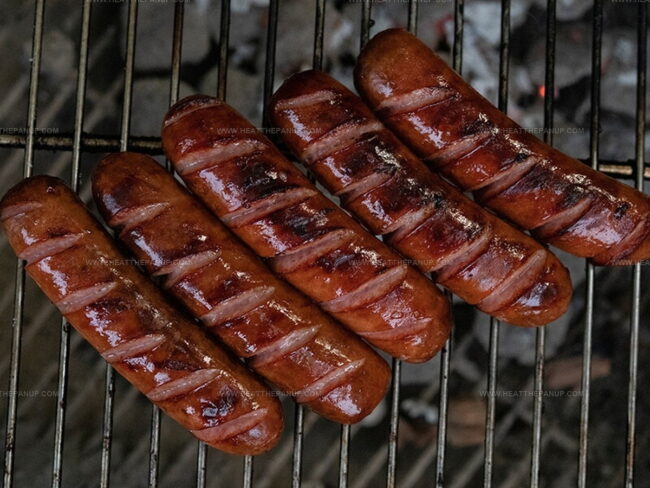
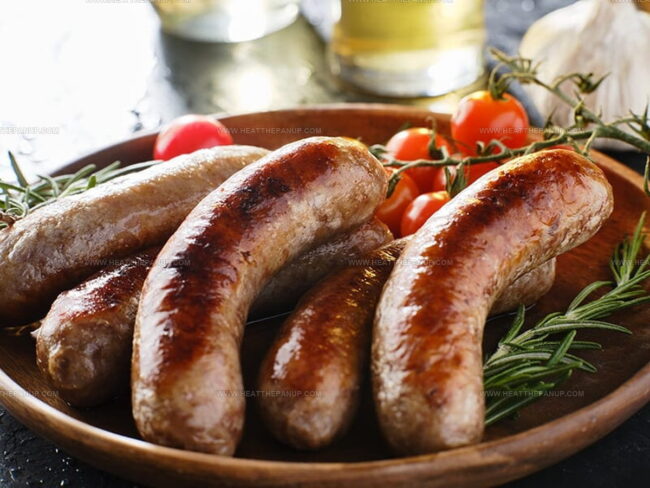
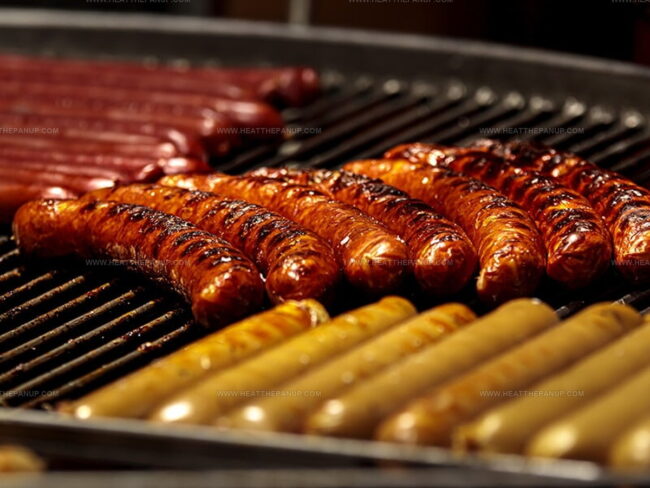
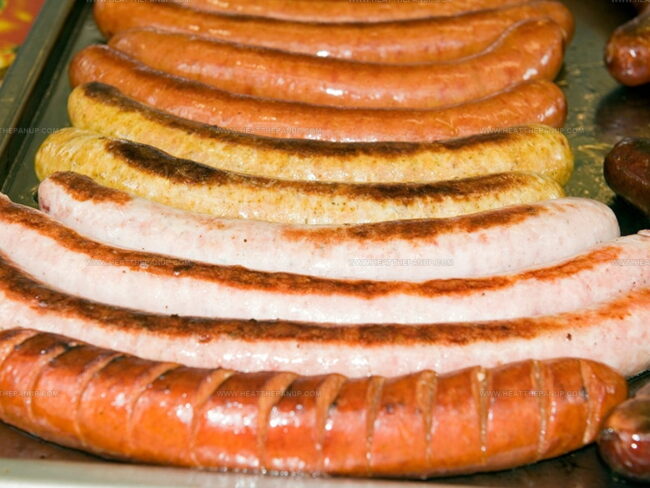
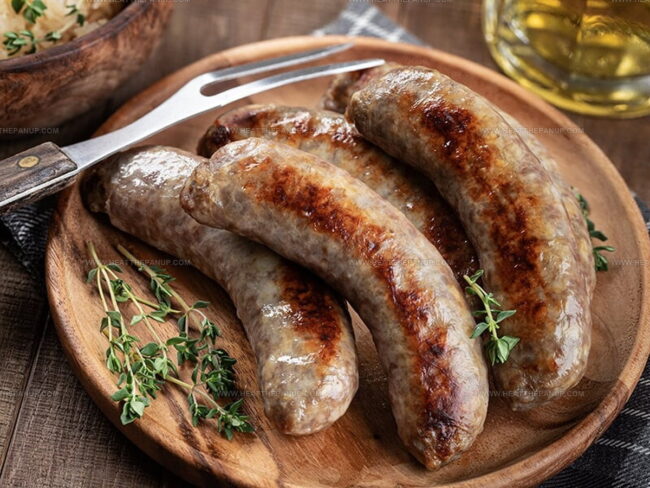
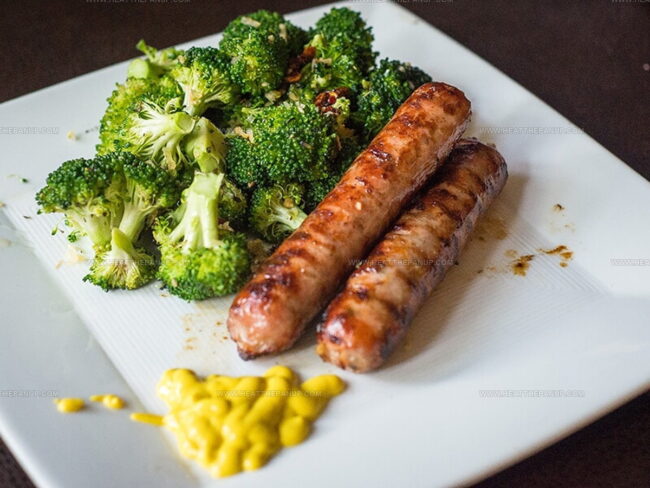
James Hambly
Founder & Recipe Creator
Expertise
Recipe Development, Culinary Education, Farm-to-Table Cooking, Southern Cuisine
Education
Asheville-Buncombe Technical Community College
Certificate in Culinary Arts
Focus: Hands-on training in professional cooking techniques, emphasizing farm-to-table practices and Southern cuisine.
The Chef’s Academy
Associate Degree in Culinary Arts
Focus: Comprehensive culinary education covering global cuisines, kitchen management, and food safety.
James grew up surrounded by the smells of cast-iron skillets and slow-cooked Southern meals in Asheville, North Carolina.
He sharpened his skills with a Certificate in Culinary Arts from Asheville-Buncombe Technical Community College, and later leveled up with an Associate Degree from The Chef’s Academy.
James’s philosophy is simple: the best meals don’t need fancy tricks, just fresh ingredients, a hot pan, and a little bit of heart. His favorite days are spent testing one-pan wonders, chasing bold flavors, and creating recipes that feel easy, even on a busy night.